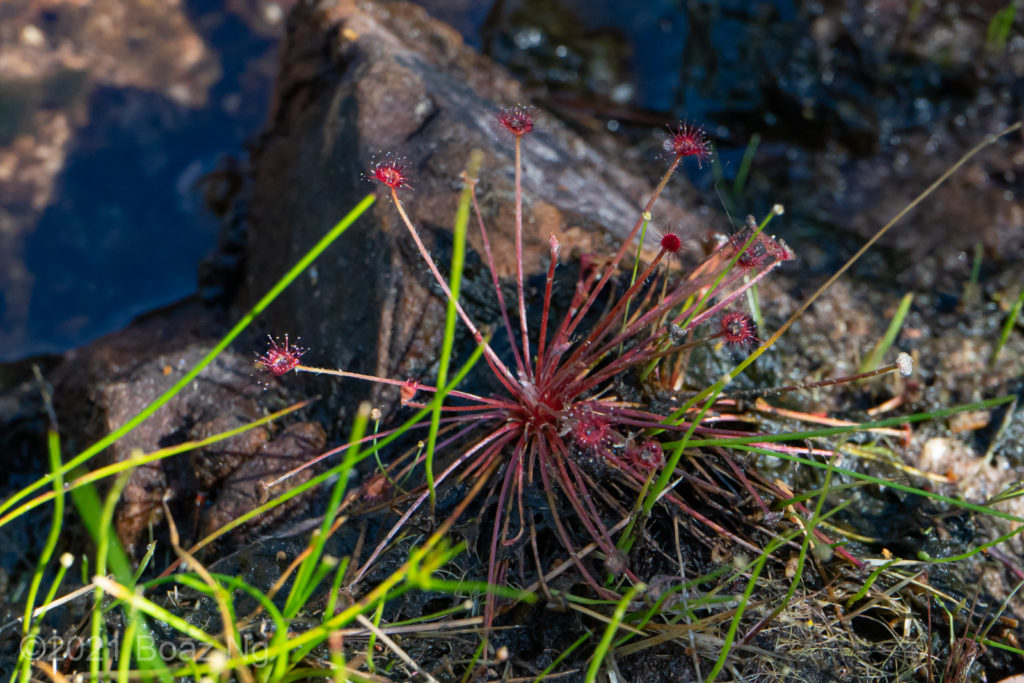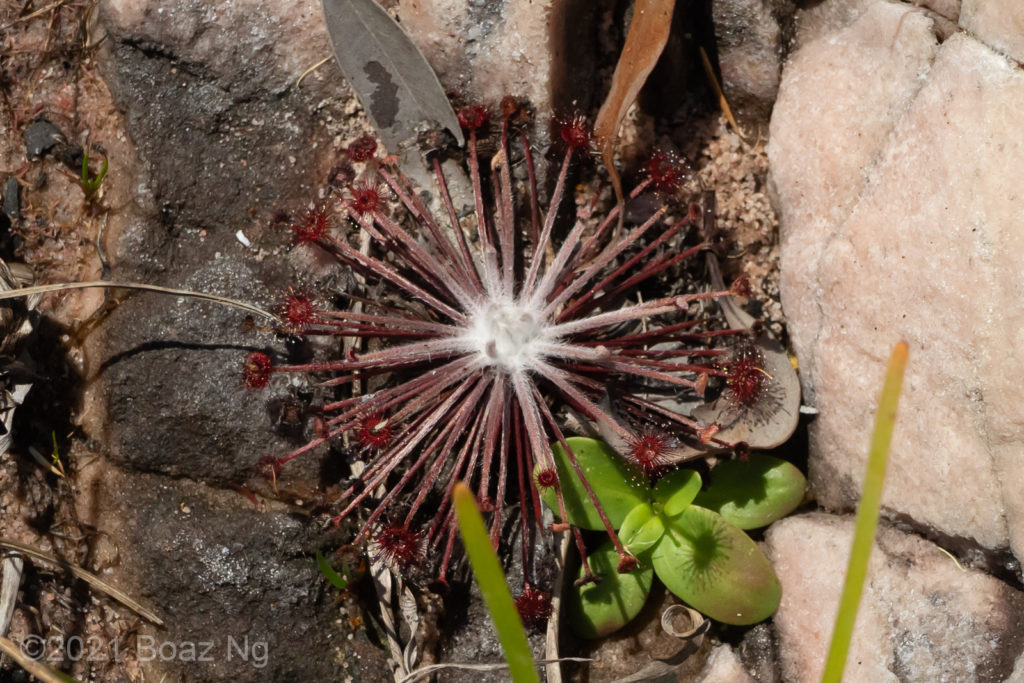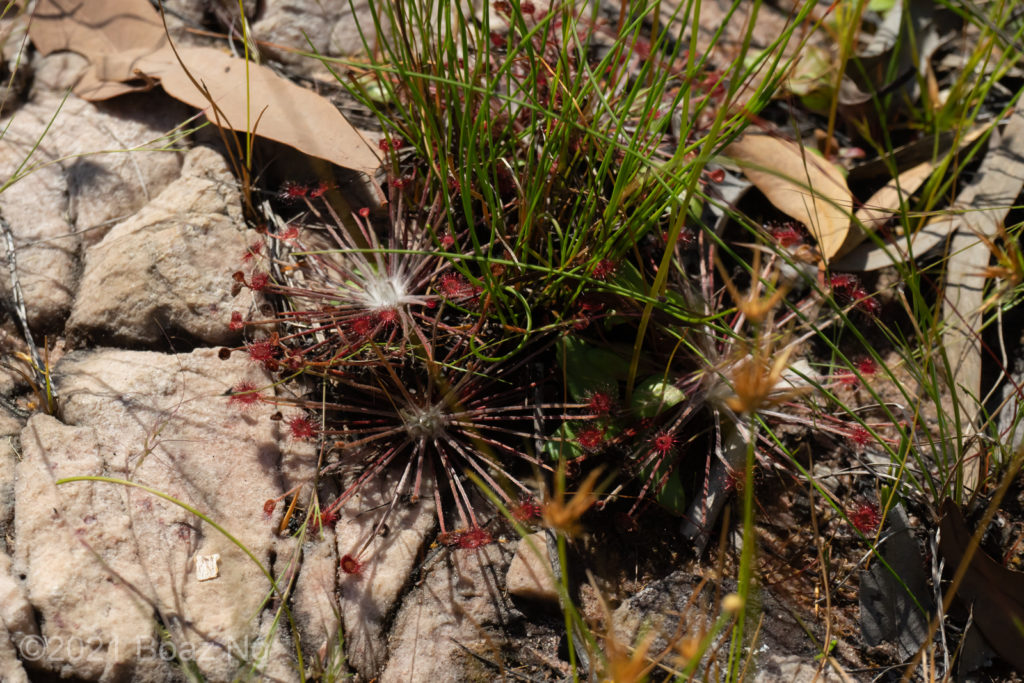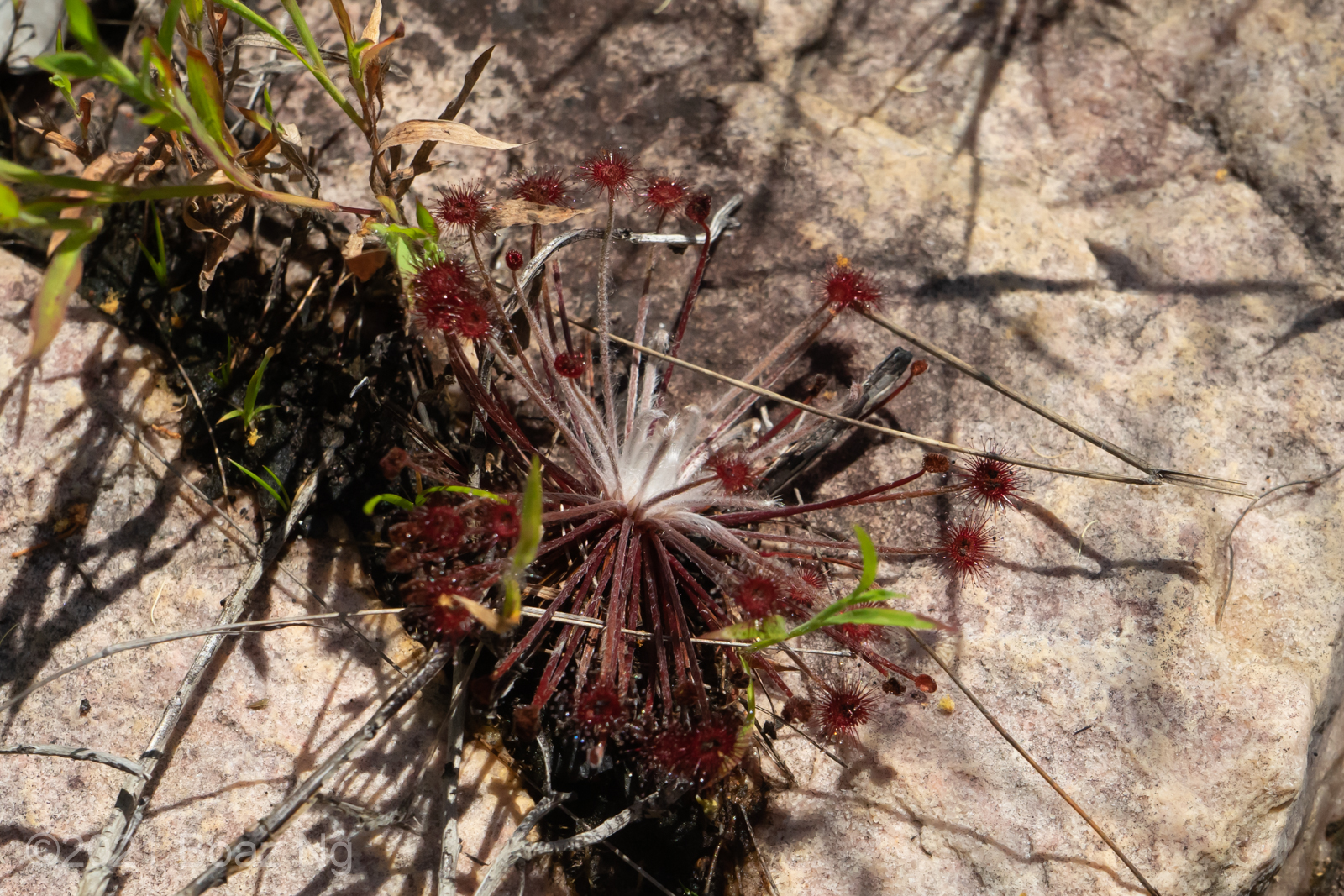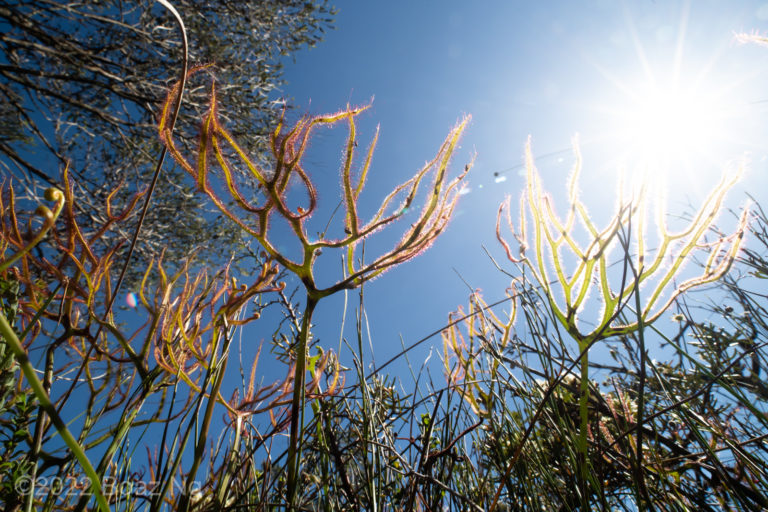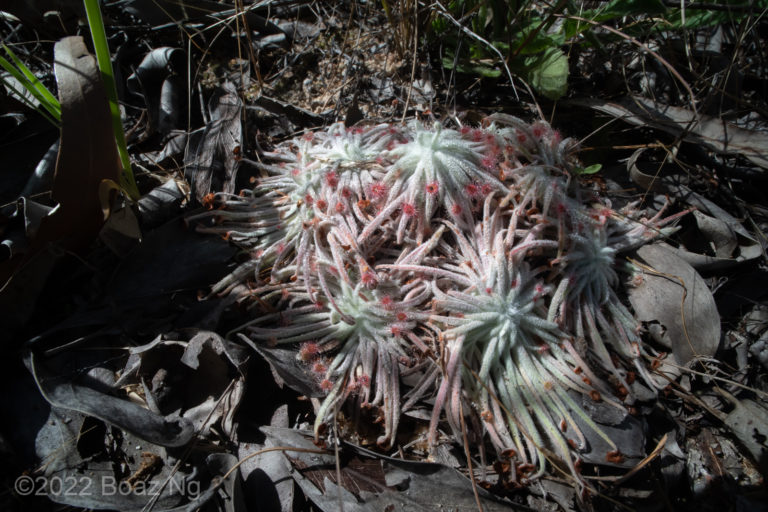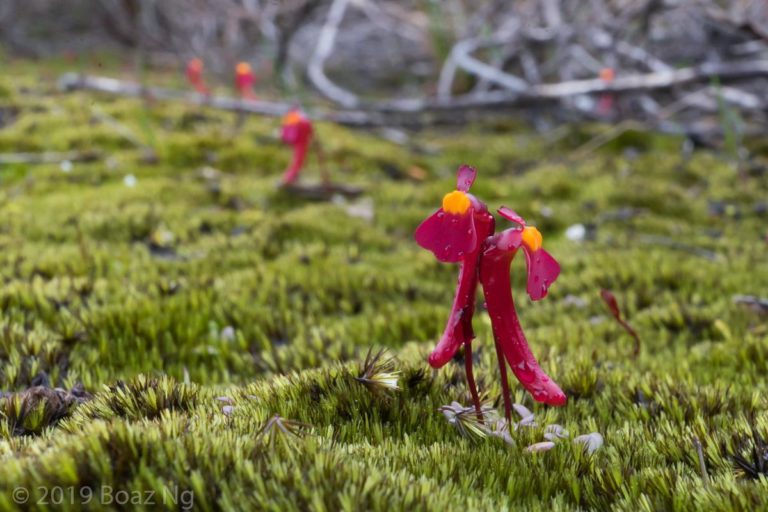The petioris complex is relatively poorly understood and there are still many undescribed and intermediate plants that don’t fit the current descriptions. In the Northern Territory, there are several taxa closely related to Drosera petiolaris but don’t match the type form for the species. D. petiolaris, as interpreted by Lowrie, is restricted to Far North Queensland. It is a small plant with thin leaves up to 6 cm long and short, pendulous pedicels. The taxa in the Territory don’t quite fit this description.
Drosera aff. petiolaris ‘NT form’
In the sandplains near Darwin, there is a common taxon that forms large rosettes that grow in dense clumps. The petioles are long and thin like D. petiolaris sensu stricto. I have not personally observed the flowers but the pedicels are semi-erect in contrast to the type. This form grows in sand aside seasonally flooded wetlands.
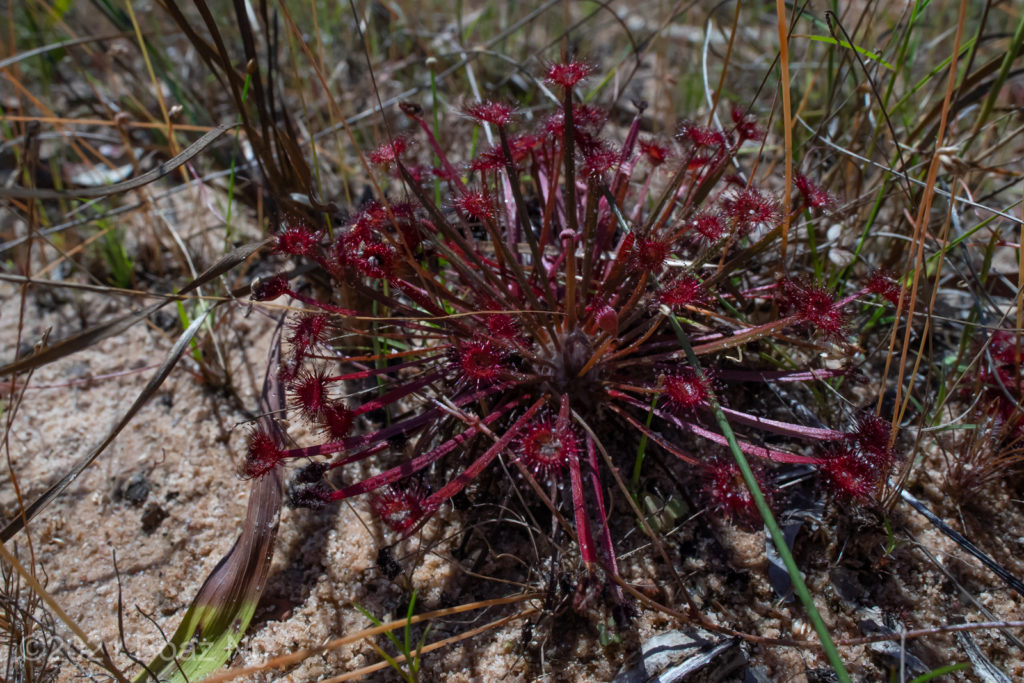
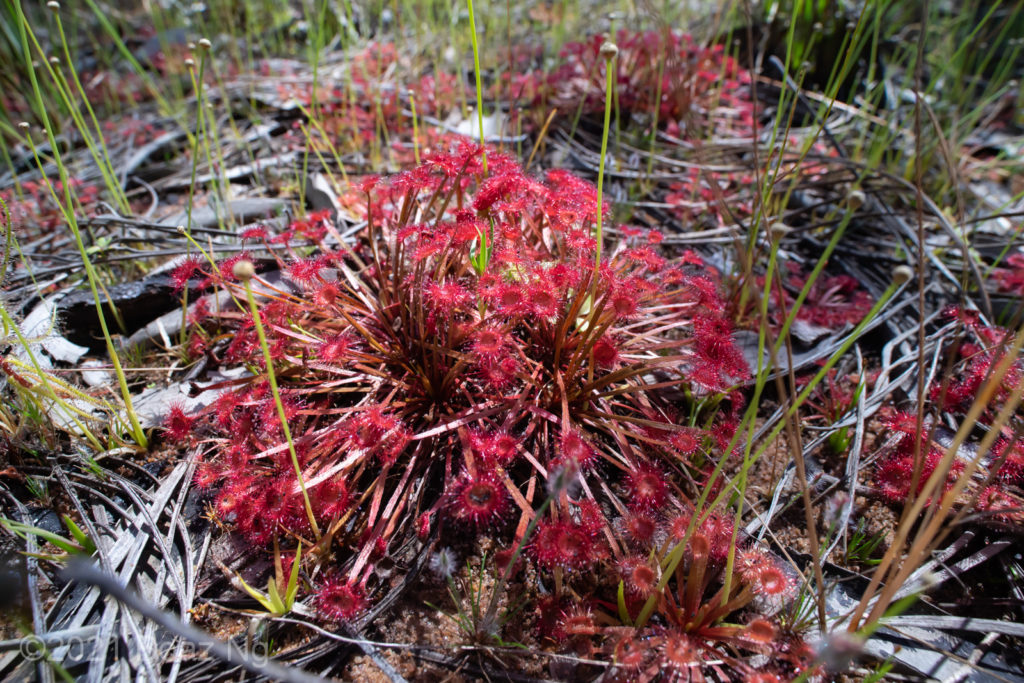
Drosera aff. petiolaris ‘pin-cushions’
In the Kakadu National Park, there is a taxon that grows very thin leaves that are both semi-erect and flat on the same rosette. Lowrie calls this plant an appropraite name of ‘pin-cushions’. The taxon forms very dense clumps and groups of the plant look like mats of grass.
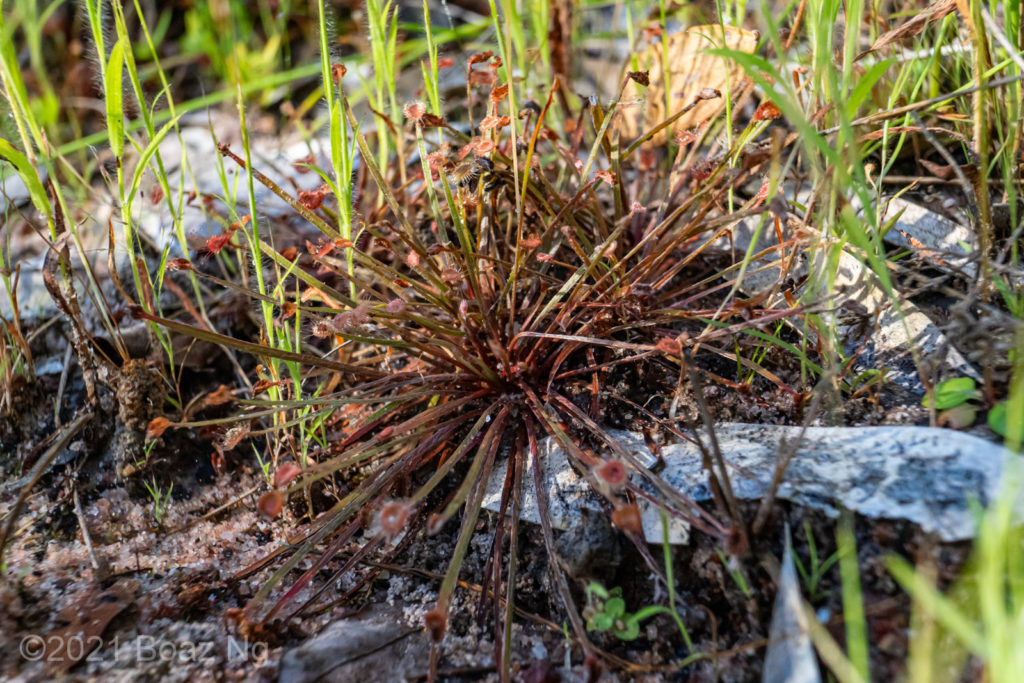
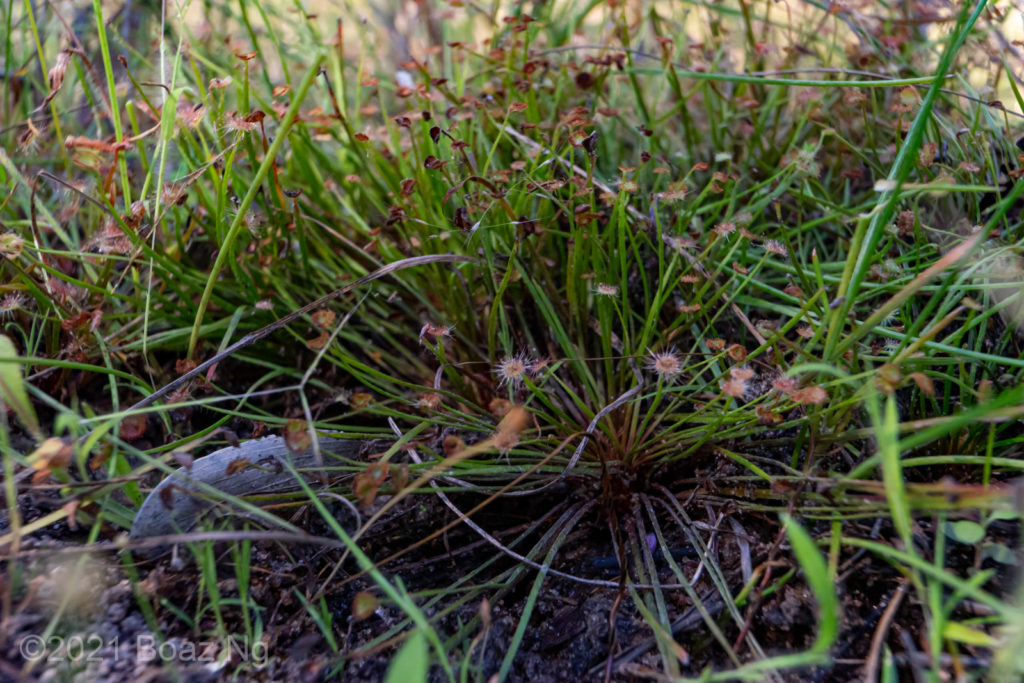
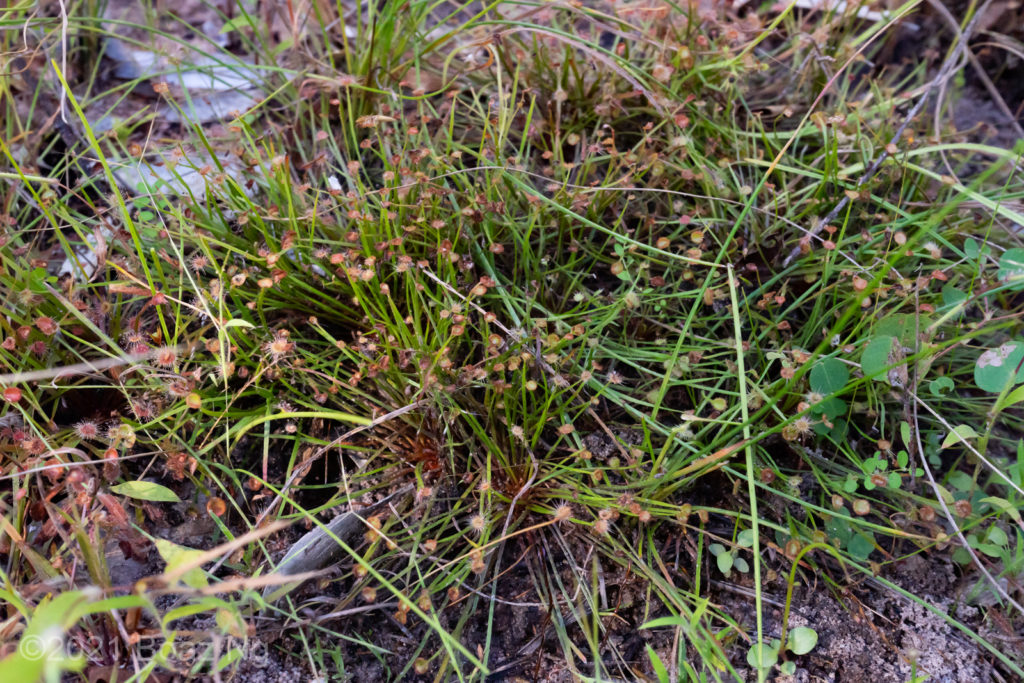
Drosera aff. petiolaris – Burrungkuy
I also observed a third taxa that seemed to be closely related to D. petiolaris with very thin leaves. In contrast to the other two taxa described here, this plant did not seem to form dense clumps of clonal plants. As it nears dormancy, the leaves are covered very densely with reflective white hairs to form a protective resting bud. The taxon was growing in seeps on the sloped sides of a creek bank in the plains of the Kakadu National Park near Burrungkuy.
